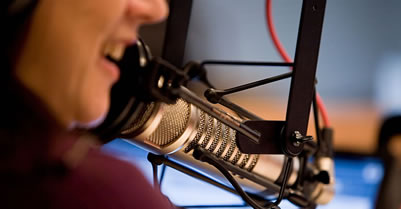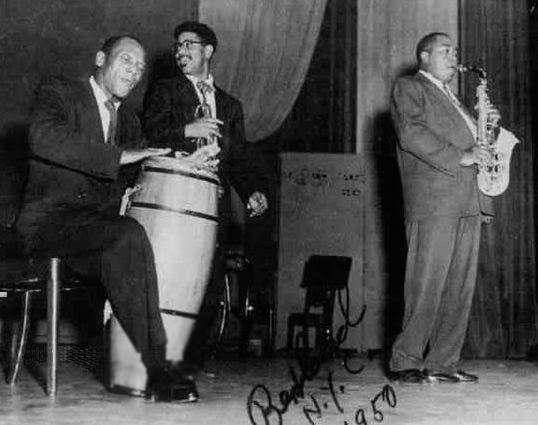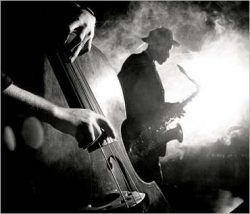Afro-Cuban culture, Blog, Cuba, Cuban Jazz, Latin Jazz, The Cuba-US connection, Video and audio
It’s billed as “the largest celebration of Cuban culture in the U.S. since the 1950’s” – and it may well be true.
This year’s New Orleans Jazz Fest will include over 150 Cuban musicians, artists and craftsman, a large number of whom will be visiting the United States for the very first time.
Events will be at the Cultural Exchange Pavilion.
Performances on the Cuban Stage every day from 11:30 AM to 5:30 PM
Friday, April 28
The Pedrito Martinez Group
Septeto Nacional Ignacio Piñeiro of Cuba
Grupo Caury of Cuba
Saturday, April 29
Septeto Nacional Ignacio Piñeiro of Cuba
Grupo Caury of Cuba
Telmary y Habana Sana of Cuba
The Pedrito Martinez Group
Conga Los Hoyos of Cuba
Abdullah Ibrahim (Not Cuban but don’t miss him!)
Sunday, April 30
Septeto Nacional Ignacio Piñeiro of Cuba
Telmary y Habana Sana of Cuba
Conga Los Hoyos of Cuba
Grupo Caury of Cuba
Lakou Mizik (Haiti)
Gente de Zona
Thursday, May 4
The Pedrito Martinez Rumba Project featuring Roman Diaz
Changüí Guantánamo of Cuba
Conga Los Hoyos of Cuba
Friday, May 5
The Pedrito Martinez Rumba Project featuring Roman Diaz
Adonis y Osain del Monte of Cuba
Changüí Guantánamo of Cuba
Saturday, May 6
Los Van Van
The Pedrito Martinez Rumba Project featuring Roman Diaz
Adonis y Osain del Monte of Cuba
Changüí Guantánamo of Cuba
Septeto Santiaguero of Cuba
Conga Los Hoyos of Cuba
Sunday, May 7
Chucho Valdes Quintet,
Adonis y Osain del Monte of Cuba
Daymé Arocena of Cuba
Septeto Santiaguero of Cuba
Changüí Guantánamo of Cuba
– Ken McCarthy
Jazz on the Tube
P.S. Our unique programming is made possible by help from people like you. Learn how you can contribute to our efforts here: Support Jazz on the Tube
Thanks.
Blog, Cuba, The Cuba-US connection, Video and audio
Filmed at Live at Wolf Trap in Virginia on August 8, 1993.
Everyone knows at least one Cuban song: “Guantanamera”
Why?
Because it’s beautiful – and because Pete Seeger worked so hard to put it on the global music map.
Seeger learned the song in 1962 from a Cuban musician named Hector Angulo from Santa Clara, Cuba who was working at a children’s summer camp in the Catkills.
He recorded it live at Carnegie Hall in 1963, the year after the Cuban Missile Crisis, and it appeared on his album “We Shall Overcome.”
Over the five plus decades that he performed it – it was one of ihs favorite songs – he encouraged his audiences to sing along and learn a little Spanish in the process.
A “Guantanamera” means a girl from the musical eastern Cuban city of Guantanamo. A “guajira” is a farmer-peasant girl. (A guajira is also a type of Cuban song.)
The song started life as “Guajira Guantanamera” and was written in 1932 by Joseíto Fernandez (1908 – 1979.)
In 1959, Julián Orbón, professor at the Manhattan School of Music where Angulo was a student, adapted stanzas from Cuban poet and revolutionary hero Jose Marti’s (1853-1895) poem “Versos Sencillos” (Simple Verses)
Others who recorded it include Joan Baez, Jose Feliciano, Los Lobos, Celia Cruz, The Sandpipers, Julio Iglesias, Gloria Estefan, and even Pitbull.
What about the rest of the words?
In honor of the great spirit Peter Seeger (1919 – 2014) who brought the song to worldwide attention, here we go.
Note: There are many variations. Here’s one:
Yo soy un hombre sincero
(I am a truthful man)
De donde crecen las palmas
(From this land of palm trees.)
Y antes de morirme quiero
(And before dying I want…)
Echar mis versos del alma
(to share these verses from my soul)
Mi verso es de un verde claro
(My verse is light green)
Y de un carmín encendido
(But it’s also flaming red)
Mi verso es un ciervo herido
(My verse is a wounded deer)
Que busca en el monte amparo
(Who seeks refuge in the mountain)
Cultivo una rosa blanca
(I cultivate a white rose)
En julio como en enero
(In June just just as in January)
Para el amigo sincero
(For the sincere friend)
Que me da su mano franca
(who gives me his hand)
Y para el cruel
(And for the cruel one…)
que me arranca el corazon con que vivo
(Who would tear out this heart with which I live)
Cardo ni ortiga cultivo
(I cultivate neither thistles nor nettles)
cultivo la rosa blanca
(I cultivate a white rose)
Con los pobres de la tierra
(With the poor people of the earth)
Quiero yo mi suerte echar
(I want to cast my lot)
El arroyo de la sierra
(The mountain stream)
Me complace más que el mar
(Gives me more pleasure than the sea)
Here’s the song performed by its composer, Joseíto Fernandez, his version, his original words.
Note the Cuban piano wizard who kicks in at 5:19.
If anyone knows who this might be, please drop me a line.
Update: Two independent sources say it’s Cheo Belén Puig.
– Ken McCarthy
Jazz on the Tube
P.S. Our unique programming is made possible by help from people like you. Learn how you can contribute to our efforts here: Support Jazz on the Tube
Thanks.
Afro-Cuban culture, Blog, Cuba, Cuban Jazz, Latin Jazz, Video and audio

One way to learn more about Cuban and Afro-Latin music is to take advantage of some of the excellent radio shows on the subject.
Here’s a short list of ones that you can stream via the Internet from anywhere on earth.
If you know of any other good programs that are streamable, please write us and we’ll add them to the list.
WWPV.org (Cuban)
Sundays Noon to 3 PM
‘Cuban Bridge” with Toni Basanta
An erudite and enjoyable three hours from one of the world’s most enthusiastic and informed experts on Cuba’s music past, present, and to come
WBAI.org (Pan Latin)
Tuesdays 10 AM to 12 PM
New York International with Al Angeloro
Saturdays 3 PM to 6 PM
New World Gallery with “Chico” Alvarez
Sundays 3 PM to 6 PM
Con Sabor Latino with Nando Albericci + Marysol Cerdeira
Note: Many of these programs are also archived
WKCR.org (Pan Latin)
Mondays 10 PM to 12 AM
Caribe Latino
Tuesdays 12 AM to 1 AM
Latin Jazz Hour
Wednesdays 10 PM to 11 PM
Nueva Cancion y Demas
Wednesdays 11 PM to 1 AM
Som do Brasil
KRTU (Pan Latin)
Every Sunday from 11:00 am to 2:00 pm (Central Time)
The Latin Jazz Brunch with Henry Brun Airs from: San Antonio, Texas and also streams live online and is archived. The program has been on the air for 15 years.
Salsa Warriors (Pan Latin)
Last but not least, there’s this 24/7 option. We especially recommend Que Viva La Music with Vicki Sola, Marysol Cerdeira and Andres Padua.
Afro-Latin music venues
For Afro-Latin music venues in New York City (the northern most outpost of the Caribbean), click here: Afro-Latin music venues in New York City
– Ken McCarthy
Jazz on the Tube
P.S. Our unique programming is made possible by help from people like you. Learn how you can contribute to our efforts here: Support Jazz on the Tube
Thanks.
Afro-Cuban culture, Blog, Cuba, Cuban Jazz, Latin Jazz, The Cuba-US connection
 Cuban percussion master Cándido de Guerra Camero (“Candido”)
Cuban percussion master Cándido de Guerra Camero (“Candido”)
with Charlie Parker and Dizzy Gillespie in New York City in 1950A surprising number of hard core jazz fans have never seen this picture and would not be able to explain its historical context or significance.
– Ken McCarthy
Jazz on the Tube
P.S. Our unique programming is made possible by help from people like you. Learn how you can contribute to our efforts here: Support Jazz on the Tube
Thanks.
Afro-Cuban culture, Blog, Cuba, Travel to Cuba
In January, March, and November of 2016, musician, musicologist, and author of “Cuba and its Music” Ned Sublette took groups to Cuba for intensive ten day in depth music tours.
It was billed as a road trip to sacred spaces in Western Cuba.
Attendees included musicians, producers, musicologists, scholars and others interested in Cuba’s culture, music and history.
I was on the March 2016 trip.
It’s possible that someone could have arranged an equivalent trip, but I don’t know how.
Drawing on his own three decades plus of experience and study in Cuba and working in collaboration with the Cuban music wizard-goddess Cary Diez, Ned arranged at least two different performances for us every day – in Havana, in Matanzas and many places west.
For those who didn’t make one of the trips, Ned’s produced a program with highlights for his long term colleagues at Afropop Worldwide.
The program features Congo, Abakuá, Yoruba, and Arará music of Cuba, as well as rumba, recorded live by Los Güiros de San Cristóbal (Regla); Ta Makuende Yaya (Quiebra Hacha); Grupo Tambores Yuka (Viñales); Afro Cuba de Matanzas, Los Muñequitos de Matanzas, and Rumba Timba (Matanzas); Omo Layé and Iyawaré Ochún (Colón); and Ojundegara (Jovellanos).
Amazingly, what appears in this hour long program is only the tip of the iceberg.
For example, there’s no mention of our visits to smoking hot jazz clubs or the magical evening we spent with the danzon orchestra El Piquete Tipico Cubano.
You’d be hard pressed to find all this music in the bin of even the most enlightened record shop in the U.S. or Cuba, let alone hear it live in the intimate settings Ned arranged.
Enjoy!
If you’re interested in Cuba and its music and want to learn more, consider signing up for my low volume list (no more than one email per week) of educational emails.
Each one comes with a little (but sometimes a lot) of commentary and a lot of great music.
– Ken McCarthy
Jazz on the Tube
P.S. Our unique programming is made possible by help from people like you. Learn how you can contribute to our efforts here: Support Jazz on the Tube
Thanks.
Afro-Cuban culture, Blog, Cuba
Tata Güines, Patato Valdez, Miguel Anga, and Orlando Poledo join forces in Paris in 1995.
From the collection of Ruben Toledo.
How do Cubans get so much music out of a drum?
An in depth tutorial here: Inside the conga
– Ken McCarthy
Jazz on the Tube
P.S. Our unique programming is made possible by help from people like you. Learn how you can contribute to our efforts here: Support Jazz on the Tube
Thanks.




